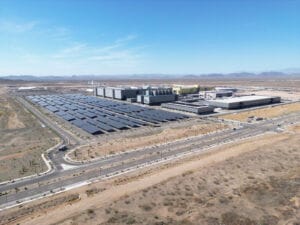The global agriculture industry is evolving rapidly, owing to advancements in technology. With an increasing need for sustainable farming practices to meet the demands of a growing population, traditional methods are being replaced by smart farming techniques. These innovative technologies are helping farmers optimize production, conserve resources, and improve the overall efficiency of their farms.
This article explores eight key ways in which technology is transforming agriculture, making it more sustainable, efficient, and productive.
1. Precision Farming with GPS Technology
Precision farming is a game-changer in agriculture, providing farmers with the tools to monitor and manage their crops with greater accuracy. At the heart of this practice is GPS technology, which allows for precise mapping of fields, enabling farmers to better understand soil variations and manage their crops accordingly. By collecting real-time data, GPS systems help farmers determine the most effective planting strategies, optimize fertilizer use, and monitor crop growth patterns.
This level of precision minimizes waste, reduces the need for excess water and chemicals, and leads to higher crop yields.
2. LoRa and LoRaWAN for Smart Agriculture
Long Range (LoRa) and Long Range Wide Area Network (LoRaWAN) are becoming critical components in modern agriculture, particularly for remote monitoring and data transmission over long distances. For those who don’t know, here’s a brief explanation of LoRa vs LoRaWAN, the two technologies that make operations easier for many industries.
LoRa is a communication protocol that enables low-power devices to transmit data over several kilometers, while LoRaWAN acts as the network infrastructure that allows multiple devices to connect and share data in large-scale farming operations.
These technologies are particularly useful in agricultural settings where internet access may be limited. By deploying LoRa and LoRaWAN-enabled sensors across fields, farmers can monitor vital information like soil moisture, temperature, and weather conditions in real-time. This data can be used to make informed decisions about irrigation schedules, planting times, and pest control. The low energy consumption of LoRa devices makes them ideal for use in large, remote farms, as they require minimal maintenance.
3. Drones for Crop Monitoring and Precision Spraying
Drones have rapidly gained popularity in agriculture due to their ability to cover large areas of farmland and provide detailed aerial imagery. Farmers use drones for a range of purposes, including crop monitoring, identifying problem areas, and precision spraying of pesticides or fertilizers. The high-resolution images and data collected by drones allow farmers to assess plant health, identify pest infestations, and detect nutrient deficiencies.
Precision spraying with drones ensures that chemicals are applied only where needed, reducing waste and limiting the environmental impact of farming. Drones also help farmers reduce the time and effort spent manually inspecting fields, making the entire process more efficient.
4. Automated Machinery for Planting and Harvesting
The rise of automated machinery is streamlining the planting and harvesting processes on modern farms. Automated tractors and harvesters, equipped with AI and machine learning, can perform tasks like sowing seeds or picking crops with high accuracy and speed. These machines are not only more efficient than traditional methods but also reduce the need for large labor forces, which is particularly beneficial during labor shortages.
Using automation, farmers can make sure that seeds are spaced evenly and placed at the correct depth. Similarly, automated harvesters can operate around the clock, significantly increasing productivity and allowing farmers to harvest crops at their peak quality.
5. Artificial Intelligence for Predictive Analytics
Artificial Intelligence (AI) is revolutionizing agriculture by providing predictive analytics that help farmers make data-driven decisions. AI-powered algorithms analyze large datasets, including historical weather patterns, soil health data, and real-time field conditions, to predict future trends and offer recommendations. Farmers can use these insights to optimize planting schedules, determine the best time for irrigation, and predict potential threats like pests or disease outbreaks.
By leveraging AI, farmers can mitigate risks that could lead to crop failure and plan their resources more efficiently. For instance, AI can predict an approaching drought, enabling farmers to adjust their irrigation practices accordingly.
6. Blockchain for Supply Chain Transparency
Blockchain technology is becoming an essential tool in agriculture, particularly for improving the transparency and traceability of the supply chain. By using blockchain, farmers and distributors can record every step of the crop lifecycle—from planting to harvesting to distribution. Each transaction is recorded in a secure and decentralized ledger that cannot be altered, providing consumers with verifiable information about the origins of their food.
For farmers, blockchain enhances accountability and builds trust with consumers and retailers. It ensures that products are ethically sourced, reducing the likelihood of fraud or tampering. Moreover, blockchain can be used to track the environmental impact of agricultural products, offering insights into carbon footprints and sustainability practices. This level of transparency is becoming increasingly important as consumers demand more information about the food they buy.
7. Smart Irrigation Systems for Water Conservation
Water conservation is critical in agriculture, especially in regions facing water scarcity. Smart irrigation systems are designed to deliver the precise amount of water that crops need, based on real-time data collected from soil sensors and weather forecasts. These systems automatically adjust water distribution so that crops receive adequate hydration without wasting water.
Smart irrigation reduces both water consumption and the costs associated with overwatering. By tailoring irrigation schedules to specific crops and field conditions, farmers can maximize the efficiency of water usage while improving crop quality. This technology is particularly useful in arid regions or areas prone to drought, where water conservation is vital to sustaining agricultural production.
8. Vertical Farming and LED Grow Lights for Urban Agriculture
In densely populated urban areas, traditional farming methods are often impractical due to space constraints. Vertical farming offers a solution by growing crops in vertically stacked layers, often within controlled environments. LED grow lights are used to provide the necessary light spectrum for plant growth, allowing for year-round cultivation in indoor settings.
Vertical farming maximizes space and eliminates the need for large tracts of land. It also reduces the dependency on weather conditions and minimizes transportation costs, as produce can be grown closer to urban centers. Furthermore, the controlled environment ensures optimal growing conditions, leading to higher yields and reduced pesticide use.
The rapid adoption of technological innovations in agriculture is leading to smarter, more efficient farming practices. These innovations enhance productivity while promoting sustainability and resource conservation. As technology continues to evolve, it is evident that it will play an even more vital role in addressing the challenges of modern agriculture, ensuring food security for the future while minimizing the environmental impact of farming practices. By embracing these technologies, farmers can transform their operations, meet the growing demand for food, and contribute to a more sustainable global food system.




